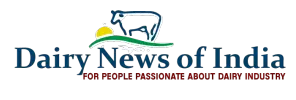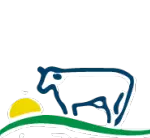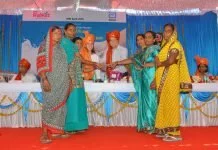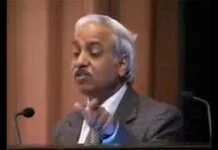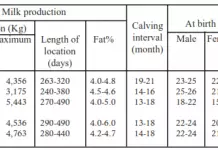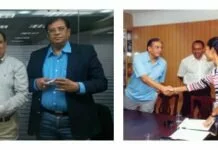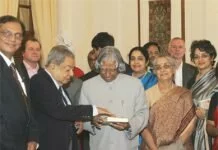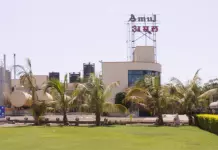The Decade and Half of Missed Opportunities [1997-2012]
Dr. Kurien conceived Operation flood and implemented it in 3 phases viz Operation Flood 1, 2 and 3 from 1970 to 1995. The total outlay on Operation Flood 1,2 and 3 all put together was limited and spent over 25 years. National Dairy Development Board was established to further the mission of operation flood.
During this period; with limited spend, he organized millions of milk producers living in remote rural areas, into 100,000 village cooperative societies. Each society would have one elected chairman and 9 management committee members and a secretary of the society (equivalent to the CEO) to manage milk collection, grading using electronic testing, making payments, record keeping, calling board meetings every month, and submitting an audited annual report to the members of their society in their local language.
In this process, he built about 200 dairy plants for processing milk received from 100,000 villages and marketed it in cities. He also built nearly 70 cattle feed plants to provide balanced cattle-feed to members at no loss no profit basis to ensure increased milk productivity. Above all he put all these structures and organizations in the hands of farmers, to let them manage, make mistakes, learn and develop.
As a result of this mammoth effort India’s milk production increased from mere 20 million metric tons (mmt) to 95 mmt between 1970 and 1995!
I would like readers to note that Operation flood outlay was minuscule and was spent on 100,000 villages of India over 25 years.
The increase in milk production was 5 fold and value of such value addition at today’s price comes to nearly Rs. 200,000 crore per year! I also want readers to note that many at NDDB and outside have given impression that cooperatives outside Gujarat and Karnataka have failed.
But the fact is different. Dr. Kurien built over 100,000 village coops in 25 years when there was no mobile or Internet or high speed communication. All these village cooperative societies have survived. And have been in profit for several decades.
It is only district milk unions where farmer’s supervision and control weakens that some losses have been incurred. This is mainly due to the fact that most state cooperative federation CEOs have been government nominated IAS and in their effort to keep milk prices within reach of urban poor & middle class, small losses have been continually incurred. However such accumulated losses is still outweighed by the volume of business of Rs. 200,000 Crores transacted in last 2 decades.
Such small “losses” were incurred on good cause largely. If a child in a city or village received a glass of milk and in the process if an insignificant loss was incurred by a milk union – why criticize the dairy cooperative movement?
In reality cooperatives have delivered in big measure! Dr. Kurien’s model is aptly suitable for this country, let there be no doubt. Let nation commit to implement it with greater vigor, resources, leadership and allow legal framework & freedom for cooperatives to improve.
The private sector can play its own role, which I see more in processing, adding value to milk and let their be competition among all to produce value added products to meet growing and changing diverse needs.
Ever since Dr. Kurien left NDDB most of the momentum for dairy development was lost. This is evident from the facts (real value addition).
- Number of new village dairy cooperatives organized in areas outside Gujarat in last 15 years is negligible. Capacity expansion in dairy cooperatives has slowed down significantly.
- Funds released to genuine dairy cooperatives except Gujarat and Karnataka was anyways insignificant. Lot of funding was diverted to Mother Dairy Pvt Ltd. directly or indirectly, which is described as ‘cooperative’ when suited and an independent company when suited so.
- Most of the policy decisions such as duty free imports or banning of exports were influenced by precarious failure of Mother Dairy Foods Limited in securing stocks at the price the ‘company’ wanted! These were often counter-productive and have worked against the interests of producers and even consumers in long run.
- Since 1995 adulteration of milk has increased particularly in North India where mother dairy dominates the market and leads procurement, whereas adulteration is not so rampant in southern states like Karnataka, Andhra, Kerala, Tamil Nadu etc.
- Artificial competition between ‘new generation’ collection centers of mother dairy, versus those of dairy cooperative milk unions and also of private dairies, has resulted into massive adulteration.
- Since 1995 the world has deployed break through technological application like sexed semen in Brazil, China, Israel, US, EU and Oceania. So Why has India lagged behind and does not have even a single semen station? None owned and managed by NDDB nor have they developed or even secured this technology. Why our performance is so dismal? Same is the condition on feed-fodder export policy and productivity.
So the question is – Who is responsible for turning a well running program into such a mess? Who is accountable?
Reality is that, over one and half decade has been lost in quarrels, quibbles, failed experiments and destroying what Dr. Kurien had started?
Our Parliament, our agriculture ministry has hardly any time or competency in these areas and largely depend upon NDDB to drive decision making. Hence, there is hardly any objective evaluation of NDDB’s performance carried out by a third party such as CAG etc. When milk production goes up largely due to efforts of cooperative societies, NDDB is quick to claim credit and if there is slight shortfall, the same NDDB starts criticizing dairy cooperatives. This very organization, which was meant to further the cooperative movement and operation flood, has unfortunately ambled aimlessly over the last decade. There are no targets taken to boost breed productivity. No targets to enhance artificial insemination with newer technologies, or expand its coverage. The dairy development board is run in an open ended manner without any systematic measure of performance.
Most of the academic researches in related areas are being carried out at our National institutions like NDRI etc. without dovetailing them into applications in the field. We lack in application of the state art technologies such as sexed semen manufacture and supply/use of genetic engineering for productivity enhancement of our indigenous breeds of cows and buffalos. All national academic and development institutions and industry work in isolation and unified strategic intent is missing.
One reason that I can think of, is that the dairy development board is missing the leadership quality of Dr. Kurien, ever since he left the scene at NDDB in 1997! As a country we have lost a decade and half with rudderless leadership.
Time to act is now!
Mr. BM Vyas took-over as Managing Director of AMUL Co-Op. during expansion and opening up of the Indian economy & globalization in the 90s. In order to take on the competition, he championed Total Quality Management across the dairy value chain in Gujarat. Within a span of 16 years at helm of AMUL, he increased sales of AMUL to eight-folds (from Rs. 9.8 billion to Rs. 80 billion). He steered AMUL to be Asia’s largest fresh Milk processor or No. 1 Dairy Brand in India as well as in Asia Pacific, as per Media Magazine Survey, 2009. Under his leadership; AMUL launched innovative and special Dietary products like Probiotic & Sugar Free Ice Cream, Probiotic buttermilk for the first time in India.
Comments
comments
